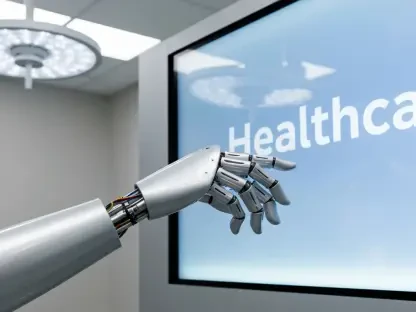The Role of Immigrant Doctors in US Healthcare
The backbone of the American healthcare system often rests on the shoulders of foreign-trained doctors, with a significant number hailing from India, who fill critical gaps where domestic talent is scarce. These physicians make up about 25% of the total doctor workforce in the United States, bringing diverse expertise and dedication to a sector struggling with ongoing shortages. Their presence is not just a statistic but a lifeline for many communities, especially in rural and underserved regions, where their contributions are essential to maintaining basic medical services.
A striking 64% of these international medical graduates serve in areas that struggle to attract American-trained physicians, often due to lower pay and limited resources. Rural hospitals and clinics, which face constant staffing challenges, rely heavily on these doctors to provide essential care, from emergency interventions to chronic disease management. Without their willingness to work in such locations, many small towns would face severe healthcare deserts, worsening existing disparities in access to medical treatment.
Indian doctors, representing one in five immigrant physicians, stand out as key players in this landscape, supported by policies like the Conrad Waiver, which allows them to stay in the country by committing to serve in Health Professional Shortage Areas. This policy has been instrumental in directing talent to where it is most needed, ensuring that vulnerable populations are not left without care. Their impact highlights a broader systemic dependence on global talent to sustain the nation’s health infrastructure.
Understanding the H-1B Visa Fee Hike
Policy Details and Immediate Implications
A recent policy shift under the previous administration has introduced a steep increase in H-1B visa fees, setting the cost at $100,000 for new applicants seeking to work in the United States. This dramatic hike has sent ripples through the medical community, particularly among the estimated 50,000 Indian-trained doctors currently practicing here. The financial burden this imposes raises serious questions about job security for existing professionals and the feasibility of recruiting new talent under such constraints.
The uncertainty surrounding potential exemptions for medical professionals adds another layer of concern, as there is little clarity on whether new applicants in the healthcare sector will be spared from this fee. For many physicians who have spent years navigating the visa system while awaiting permanent residency, the policy feels like a sudden barrier to their stability. Hospitals, already cautious about costs, may hesitate to sponsor visas at this price, potentially disrupting the pipeline of critical healthcare providers.
Projected Impact on Healthcare Supply
Compounding the issue is the looming physician shortage, projected to reach a deficit of 124,000 by 2034, a gap that immigrant doctors have historically helped to bridge. With states like California, New York, and Florida relying on foreign-trained physicians for over 30% of their medical workforce, the fee hike threatens to cut off a vital supply line. The policy could deter new entrants, leaving these regions vulnerable to reduced healthcare capacity at a time when demand continues to rise.
Rural hospitals, often operating on tight budgets, face an even greater risk, as the additional cost of hiring H-1B physicians may become prohibitive. These facilities, which serve as the primary care hubs for remote communities, could see staffing levels drop further if the financial hurdle becomes insurmountable. Looking ahead, the ripple effects might translate into longer wait times for patients and diminished access to specialized care in areas already stretched thin.
Challenges Facing Rural Healthcare Amid Policy Changes
Rural healthcare systems have long grappled with systemic obstacles, including limited funding and an inability to attract American medical graduates, who often prefer urban settings with better infrastructure and compensation. These challenges create a vicious cycle, where understaffed facilities struggle to provide adequate care, further deterring potential hires. The dependence on foreign-trained doctors has been a critical stopgap, but it is now under threat due to emerging policy barriers.
The H-1B fee increase worsens these struggles by imposing an additional financial strain on hospitals that can barely afford it, potentially forcing administrators to cut back on hiring international talent. This could lead to a cascading effect, where reduced staffing compromises patient outcomes, further damaging the reputation and viability of rural medical centers. The burden falls not just on institutions but on the communities they serve, many of whom already face significant barriers to accessing timely care.
Potential solutions to this crisis include advocating for targeted exemptions for medical professionals from the fee hike, ensuring that healthcare remains a priority in immigration policy. Additionally, increasing incentives for rural practice—such as loan forgiveness programs or enhanced compensation packages—could help balance the scales. Without such interventions, the gap between rural healthcare needs and available resources risks widening to an unsustainable degree.
Regulatory Landscape and Immigration Policy Debates
The history of US immigration policy shows a longstanding recognition of the need for foreign doctors, dating back to the 1960s when their influx began to address growing healthcare demands. Measures like the Conrad Waiver, implemented in the 1990s, have played a pivotal role by allowing international medical graduates to remain in the country if they commit to serving in underserved areas. This framework has been a cornerstone of efforts to improve healthcare access where it is most needed.
Today, the debate over the H-1B fee hike reflects broader tensions in immigration policy, with some arguing that stricter controls are essential to protect American jobs. However, research from the University of California San Diego counters this narrative, showing that relaxed visa rules have not harmed employment prospects for US medical graduates but instead enabled foreign doctors to fill critical gaps. This evidence challenges the rationale behind restrictive measures, highlighting their potential to do more harm than good in the healthcare sector.
Organizations like the American Medical Association have taken a firm stand against the fee increase, advocating for exemptions to preserve the supply of international talent. Representing a coalition of over 50 groups, their position emphasizes that foreign physicians are not displacing domestic workers but complementing them by serving in areas of acute need. Their advocacy underscores the urgency of crafting policies that balance economic priorities with the pressing demands of public health.
Future Outlook for Immigrant Doctors and Rural Healthcare
Looking toward the future, the long-term implications of the H-1B fee hike could reshape the landscape for foreign-trained doctors, potentially reducing their numbers at a time when shortages are expected to worsen. As the projected deficit of physicians grows over the coming years, the absence of a strong pipeline of international talent may place unbearable strain on an already overburdened system. Rural areas, in particular, stand to lose the most, as their reliance on these professionals remains unmatched.
Emerging trends, such as shifting immigration attitudes and global economic pressures, further complicate the picture, with nationalistic sentiments in policy-making potentially leading to tighter restrictions. At the same time, innovations in healthcare delivery, such as telemedicine, offer some hope for easing access issues, though they cannot fully replace the need for on-the-ground physicians. The interplay of these factors will likely determine how effectively the nation can address its medical staffing challenges in the years ahead.
The increasing dependence on immigrant doctors amid evolving policies also raises questions about sustainability and equity in healthcare distribution. If financial barriers continue to deter hospitals from hiring H-1B physicians, disparities between urban and rural care could deepen, leaving vulnerable populations with even fewer options. Navigating this future will require a careful balance of regulatory adjustments and strategic investments to ensure that no community is left behind.
Conclusion and Recommendations
Reflecting on the discussions, it is evident that the H-1B fee hike poses a substantial threat to rural healthcare access, casting a shadow over the broader stability of the US medical system. The critical contributions of immigrant doctors, especially in underserved regions, stand out as a lifeline that risks being severed by financial and policy constraints. This challenge demands urgent attention to prevent a worsening of existing disparities.
Moving forward, actionable steps are a priority, starting with the implementation of clear exemptions for medical professionals from the fee increase to safeguard the influx of essential talent. Additionally, targeted support for rural hospitals through federal funding or incentive programs is vital to ease their financial burdens and maintain staffing levels. These measures promise to uphold the invaluable role of foreign-trained physicians in sustaining healthcare delivery.
Beyond immediate fixes, a broader commitment to balanced immigration policies is a necessary goal, one that protects American jobs while addressing acute healthcare shortages. Policymakers are urged to consider long-term frameworks that prioritize public health alongside economic interests. Such an approach aims to ensure that rural communities continue to receive the care they desperately need, preserving the foundation of equity in the nation’s health infrastructure.









